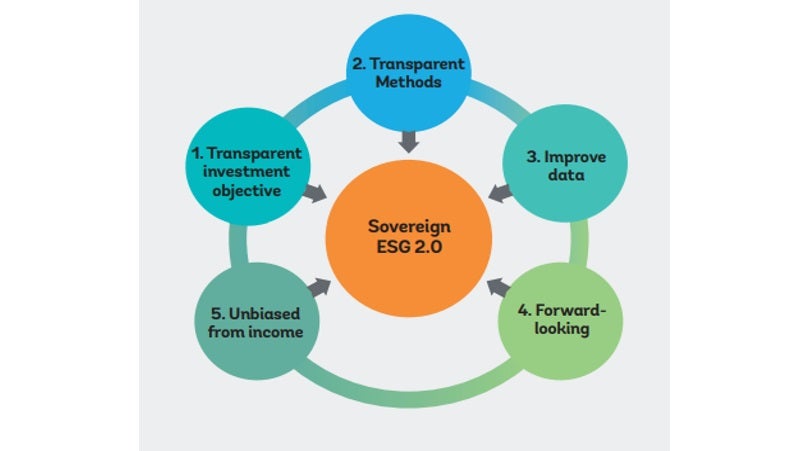Watch Fiona Stewart's conversation with Jaakko Koorosky at COP28.
Nearly $500 trillion is invested in financial assets worldwide. While markets are increasingly recognizing the risks of climate change and biodiversity loss, the financing gap to meet the goals of the Paris Accord and Sustainable Development Goals (SDGs) continues to rise. Low- and middle-income countries are especially affected.
As we strive to create a world free of poverty – on a livable planet, , redirecting private financial flows is as critical as enhanced government action. That requires efforts across the spectrum – from system-level policy and regulatory reforms to developing blended-finance and derisking solutions at a project level both of which are part of the World Bank’s Evolution Roadmap.
Innovation is a key part of the story – through both new products and the ways of accessing them through markets. Take for example new types of sustainability linked bonds. Or new, more ‘sustainable’ versions of ‘passive’ investment funds, which track a benchmark market index to determine what to invest in. Such ‘passive’ fund form an increasingly large part of the financial system. How these benchmarks are constructed, and which benchmarks asset owners select, can play a key role in redirecting global financial flows towards a more sustainable future.
ESG investing is also playing a growing role in sovereign debt markets, which makes up almost 40 percent of the more than $90 trillion global bond market – and is an important source of funds for many emerging market countries.
The issue is that, as many of ESG indicators often correlate closely with GDP per capita – or in non-technical terms, richer countries tend to get better ESG scores. This may be justified on some counts but does not take notably environmental aspects into account and does not fully recognize the improvements which many emerging markets are making.
This means that capital allocation can be unintentionally blown off course and head away from the very countries which need it most.
Average ESG scores across seven ESG providers are highly correlated with GNI per capita across 133 countries. The regression line exhibits a significantly positive slope.

Here at the World Bank we have highlighted this ‘ingrained income bias’ against many of our client countries. And we have garnered fellow travelers looking to improve on how markets incorporate ESG analysis – with excellent research on the topic coming out, including from our IMF colleagues, from academics and from financial market institutions.
Our ESG Sovereign Data Portal now incorporates tools to course correct – including not just looking at the current indicators for a country but taking account of momentum and improvement as well as a country’s position vs. its peers. We have also made more ‘E’ environmental indicators available, including natural capital and wealth data, which were poorly covered in market analysis, with the rich natural capital of many emerging markets overlooked.
Guiding Principles Sovereign ESG 2.0

Have these findings been incorporated into better sovereign ESG analysis? Has the course correction started? The answer is yes. For example, the team at FTSE Russell, one of the main global index providers, has devised ways to remove income biases from ESG scores and updated their methodology for devising sovereign ESG indexes which in many respects aligns with our recommendations. They estimate that up to $2.5 trillion of public & private funds track or benchmark the parent FTSE government indices to some degree – so any change in index methodology can ultimately affect billions of dollars in capital flows.
Based on analysis of the impacts of the new methodology, there will be a significant shift away from fossil fuel dependent countries and into countries which are stepping up in terms of decarbonization transitions, climate pledges and natural capital protection. The FTSE Russell team estimate that in 2023 alone around $1.5 billion has been reallocated away from the ‘worst’ ESG scorers within their indices.
The FTSE Russell team have also devised other navigational tools – including the latest version of their COP28 Net Zero Atlas which systematically assess climate targets and mitigation strategies, as well as physical risk facing countries. As the transition and physical risks arising from climate change begin to reshape economic growth trajectories and asset valuations, institutional investors will need such analytical tools and investment strategies to respond to these challenges.
Others are heading in a similar direction. Take Legal and General, one of the UK’s investment managers, which recently launched an ESG emerging market bond fund which factors in forward-looking sovereign risk factors adjusted for potential income bias.
Sustainability is a complex topic, and it is important that market practices embedded in the financial system are equitable and transparent for all. Although sovereign ESG investing is certainly one lever to attract ESG-orientated capital, other methods such as taxation and regulatory changes should not be disregarded. We will need all hands-on deck to weather the coming climate storm.


Join the Conversation